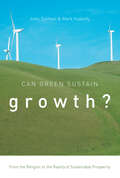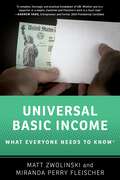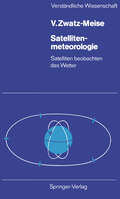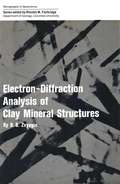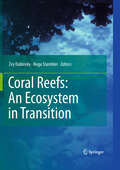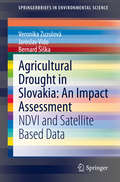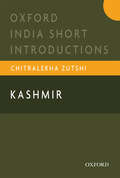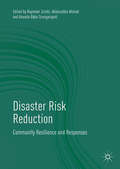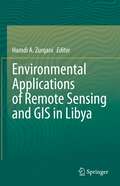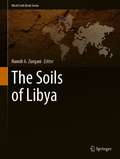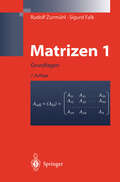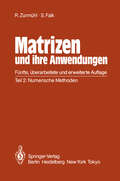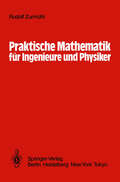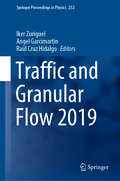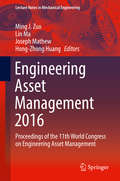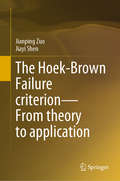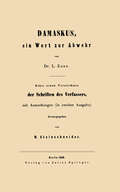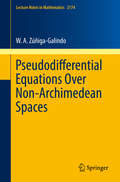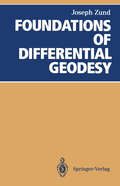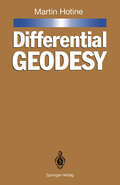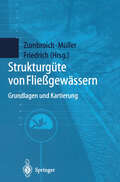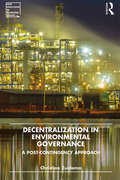- Table View
- List View
Can Green Sustain Growth?: From the Religion to the Reality of Sustainable Prosperity (Innovation and Technology in the World Economy)
by John Zysman Mark HubertyGreen growth has proven to be politically popular, but economically elusive. Can Green Sustain Growth? asks how we can move from theoretical support to implementation, and argues that this leap will require radical experimentation. But systemic change is costly, and a sweeping shift cannot be accomplished without political support, not to mention large-scale cooperation between business and government. Insightful and timely, this book brings together eight original, international case studies to consider what we can learn from the implementation of green growth strategies to date. This analysis reveals that coalitions for green experimentation emerge and survive when they link climate solutions to specific problems with near-term benefits that appeal to both environmental and industrial interests. Based on these findings, the volume delivers concrete policy recommendations for the next steps in the necessary shift toward sustainable prosperity.
The End Of Man: A Feminist Counterapocalypse (PDF) (Forerunners: Ideas First)
by Joanna ZylinskaWhere the Anthropocene has become linked to an apocalyptic narrative, and where this narrative carries a widespread escapist belief that salvation will come from a supernatural elsewhere, Joanna Zylinska has a different take. The End of Man rethinks the prophecy of the end of humans, interrogating the rise in populism around the world and offering an ethical vision of a "feminist counterapocalypse," which challenges many of the masculinist and technicist solutions to our planetary crises. The book is accompanied by a short photo-film, Exit Man, which ultimately asks: If unbridled progress is no longer an option, what kinds of coexistences and collaborations do we create in its aftermath?
Universal Basic Income: What Everyone Needs to Know® (WHAT EVERYONE NEEDS TO KNOW)
by Matt Zwolinski Miranda Perry FleischerFrom Finland to Kenya to Stockton, California, more and more governments and private philanthropic organizations are putting the idea of a Universal Basic Income to the test. But can the reality live up to the hype? The motivating idea of a Universal Basic Income (UBI) is radically simple: give people cash and let them do whatever they want with it. But does this simple idea have the potential to radically transform our society? Is a UBI the ultimate solution to the problem of poverty? Is it the solution to automation-induced unemployment? Can it help solve gender and racial inequality? This book provides the average citizen with all the information they need to understand current debates about the UBI. It recounts the history of the idea, from its origins in the writings of 18th century radical intellectuals to contemporary discussions centered on unemployment caused by technological advances such as artificial intelligence. It discusses current pilot programs in the United States and around the world, including how much (or little) we can learn from such experiments about how a large-scale UBI would fare in the real world. It explores both the promises and pitfalls of a UBI, taking seriously the arguments of both supporters and detractors. It also explains why the UBI has attracted supporters from all across the ideological spectrum--from conservatives to liberals, libertarians to socialists--and what the implications of this fact are for its political future. How much would a UBI cost? Who would be eligible to receive it? Would it discourage work? Would people squander it on drugs and alcohol? Would it contribute to inflation? And how is it different from existing social welfare programs? This book provides an objective, expert guide to these questions and more, and is essential reading for anyone seeking to understand what could be the 21st century's most important public policy debate.
Universal Basic Income: What Everyone Needs to Know® (WHAT EVERYONE NEEDS TO KNOW)
by Matt Zwolinski Miranda Perry FleischerFrom Finland to Kenya to Stockton, California, more and more governments and private philanthropic organizations are putting the idea of a Universal Basic Income to the test. But can the reality live up to the hype? The motivating idea of a Universal Basic Income (UBI) is radically simple: give people cash and let them do whatever they want with it. But does this simple idea have the potential to radically transform our society? Is a UBI the ultimate solution to the problem of poverty? Is it the solution to automation-induced unemployment? Can it help solve gender and racial inequality? This book provides the average citizen with all the information they need to understand current debates about the UBI. It recounts the history of the idea, from its origins in the writings of 18th century radical intellectuals to contemporary discussions centered on unemployment caused by technological advances such as artificial intelligence. It discusses current pilot programs in the United States and around the world, including how much (or little) we can learn from such experiments about how a large-scale UBI would fare in the real world. It explores both the promises and pitfalls of a UBI, taking seriously the arguments of both supporters and detractors. It also explains why the UBI has attracted supporters from all across the ideological spectrum--from conservatives to liberals, libertarians to socialists--and what the implications of this fact are for its political future. How much would a UBI cost? Who would be eligible to receive it? Would it discourage work? Would people squander it on drugs and alcohol? Would it contribute to inflation? And how is it different from existing social welfare programs? This book provides an objective, expert guide to these questions and more, and is essential reading for anyone seeking to understand what could be the 21st century's most important public policy debate.
Satellitenmeteorologie: Satelliten beobachten das Wetter (Verständliche Wissenschaft #117)
by Veronika Zwatz-MeiseElectron-Diffraction Analysis of Clay Mineral Structures (Monographs in Geoscience)
by B. B. ZvyaginAs a method of structure analysis, electron diffraction has its own spe cial possibilities and advantages in comparison to the X -ray method for the study of finely dispersed minerals with layer or pseudolayer structures. How ever, possibly because of the prior existence of the X-ray method, which found universal application in different fields and attracted the main efforts of spe cialists, electron diffraction has been unevenly disseminated and developed in different countries. In particular, the oblique texture method, which gives very complete and detailed structural information, has been mainly used in the Soviet Union, where electron-diffraction cameras specially suited to the method have been constructed. In other countries, studies have been made of micro-single crystals, because these studies could be carried out with existing electron microscopes. It should be recognized that the scale of distribution and use attained by electron-diffraction methods, at present limited by exist ing experimental conditions. is more than justified by the value of the results which may be obtained by their aid. The author hopes that the present book will give the reader a fuller idea of the valuable advantages of the method, and of the structural crystallography picture which has been built up for clay minerals, and layer silicates in general, from electron-diffraction data. The time between the appearance of this book and that of the Russian edition has been comparatively short.
Coral Reefs: An Ecosystem in Transition
by Zvy Dubinsky and Noga StamblerThis book covers in one volume materials scattered in hundreds of research articles, in most cases focusing on specialized aspects of coral biology. In addition to the latest developments in coral evolution and physiology, it presents chapters devoted to novel frontiers in coral reef research. These include the molecular biology of corals and their symbiotic algae, remote sensing of reef systems, ecology of coral disease spread, effects of various scenarios of global climate change, ocean acidification effects of increasing CO2 levels on coral calcification, and damaged coral reef remediation. Beyond extensive coverage of the above aspects, key issues regarding the coral organism and the reef ecosystem such as calcification, reproduction, modeling, algae, reef invertebrates, competition and fish are re-evaluated in the light of new research and emerging insights. In all chapters novel theories as well as challenges to established paradigms are introduced, evaluated and discussed. This volume is indispensible for all those involved in coral reef management and conservation.
Nanostructured Soft Matter: Experiment, Theory, Simulation and Perspectives (NanoScience and Technology)
by A. V. ZvelindovskyThis book provides an interdisciplinary overview of a new and broad class of materials under the unifying name Nanostructured Soft Matter. It covers materials ranging from short amphiphilic molecules to block copolymers, proteins, colloids and their composites, microemulsions and bio-inspired systems such as vesicles.
Agricultural Drought in Slovakia: NDVI and Satellite Based Data (SpringerBriefs in Environmental Science)
by Veronika Zuzulová Jaroslav Vido Bernard ŠiškaThis book gives an insight into the evaluation of drought in Slovakia and provides an assessment of Normalized Difference Vegetation Index (NDVI) as a method suitable for an evaluation of drought in agricultural land. Dry seasons in the time series from 1960 to 2014 were determined according to the monthly Palmer Drought Severity Index (PDSI). The field research was carried out on 12 sites including western Slovakia, Prešov, Trnava and Nitra regions. Data collected from satellite imagery, climate data analyses and drought indices was analysed to determine the value of NDVI as an evaluation tool.
Kashmir (Oxford India Short Introductions)
by Chitralekha ZutshiSince 1947-48, when India and Pakistan fought their first war over Kashmir, it has been reduced to an endlessly disputed territory. As a result, the people of this region and its rich history are often forgotten. This short introduction untangles the complex issue of Kashmir to help readers understand not just its past, present, and future, but also the sources of the existing misconceptions about it. In lucidly written prose, the author presents a range of ways in which Kashmir has been imagined by its inhabitants and outsiders over the centuries—a sacred space, homeland, nation, secular symbol, and a zone of conflict. Kashmir thus emerges in this account as a geographic entity as well as a composite of multiple ideas and shifting boundaries that were produced in specific historical and political contexts.
Disaster Risk Reduction: Community Resilience and Responses
by Bupinder Zutshi Akbaruddin Ahmad Ananda Babu SrungarapatiThis book discusses the interconnected, complex and emerging risks in today’s societies and deliberates on the various aspects of disaster risk reduction strategies especially through community resilience and responses. It consists of selected papers presented at the World Congress on Disaster Management, which focused on community resilience and responses towards disaster risk reduction based on South Asian experiences, and closely examines the coordinated research activities involving all stakeholders, especially the communities at risk. Further, it narrates the experiences of disaster risk-reduction in different communities that have policy implications for mitigation of future disaster risks in the societies affected by these types of disasters. Written from the social science perspective to disasters rather than an engineering approach, the book helps development and governance institutions to prioritize disasters as a problem of development rather than being parallel to it.
Environmental Applications of Remote Sensing and GIS in Libya
by Hamdi A. ZurqaniThis book addresses the environmental challenges that Libya and similar countries in the regions are currently facing. Each chapter of this book provides a methodology using remote sensing (RS) and geographical information systems (GIS) dealing with one of these environmental challenges such as monitoring and mapping soil salinity and prediction of soil properties, monitoring and mapping of land degradation, spatiotemporal land use/cover, agricultural drought monitoring, hydrological applications such as spatial rainfall distribution, surface runoff, geo-morphometric analysis, flood hazard assessment and mapping, hydrologic and hydraulic modeling, pollution hazard assessment, and climate-related geophysical processes. This book also assesses the impacts of climate change on natural resources using both RS and GIS, as well as other applications, covering different parts of Libya. This book is beneficial for graduate students, researchers, policy planners, and stakeholders in Libya as well as other countries that share similar environmental issues. Also, the methodologies followed in the book's chapters can be applied to any other regions around the world with similar landscapes and climatic conditions.
The Soils of Libya (World Soils Book Series)
by Hamdi A. ZurqaniThis book presents the soil pedodiversity in Libya. Soils are the source of all life; there can be no life without them. Further, each soil has its own history and its present conditions, which have been shaped by many different factors (e.g. climate, biota, parent material, and relief or topography). The book, divided into eight chapters, provides extensive information on Libyan soils. Chapter one provides an introduction and a broad perspective of the subject, while Chapter two covers the history of soil mapping and research in Libya. Chapter three focuses on local factors of soil formation and describes the geology and climate of the region to explain the diversity of its soils. Chapter four discusses soil classification systems and those most commonly used in the country. The fifth chapter illustrates the constraints and limiting factors that negatively affect agricultural activities across the country. The land cover/land use and the vegetation of the country are described in Chapter six. In turn, Chapter seven presents the status quo of soil biology, the corresponding related research activities, and the other biological properties of Libyan soils. The final chapter (Chapter eight) focus on land degradation and desertification in Libya, emphasizing the main causes, impacts of the phenomena, and efforts to combat it. This book demonstrates the problems that the country is currently facing as a result of climate change, soil erosion, salinization, and pollution, and outlines potential remedies to improve local food security. Bringing together the perspectives and expertise of many distinguished scientists from various universities and institutions in and outside of Libya, the book represents a unique and highly valuable resource.
Matrizen und ihre Anwendungen 1: Grundlagen Für Ingenieure, Physiker und Angewandte Mathematiker (Klassiker der Technik #30)
by Rudolf Zurmühl Sigurd FalkDas Buch behandelt Matrizengleichungen und -funktionen sowie die computergerechte Darstellung und Lösung der Bewegungsgleichungen von Schwingungssystemen mit endlich vielen Freiheitsgraden und führt in die Grundlagen der Näherungsmethoden von Rayleigh und Ritz ein. Das Eigenwertproblem wird, anders als sonst üblich, von einem allgemeinen Standpunkt aus betrachtet. Dadurch gewinnt die Darstellung an Verständlichkeit und an Anwendungsbreite. Das Buch ist sowohl für Studierende als auch für Physiker und Ingenieure in der Praxis geschrieben.
Matrizen und ihre Anwendungen für Angewandte Mathematiker, Physiker und Ingenieure: Teil 2: Numerische Methoden
by Rudolf Zurmühl Sigurd FalkTraffic and Granular Flow 2019 (Springer Proceedings in Physics #252)
by Iker Zuriguel Angel Garcimartín Raúl Cruz HidalgoThis book gathers contributions on a variety of flowing collective systems. While primarily focusing on pedestrian dynamics, they also reflect the latest developments in areas such as vehicular traffic and granular flows and address related emerging topics such as self-propelled particles, data transport, swarm behavior, intercellular transport, and collective dynamics of biological systems. Combining fundamental research and practical applications in the various fields discussed, the book offers a valuable asset for researchers and practitioners alike.
Engineering Asset Management 2016: Proceedings of the 11th World Congress on Engineering Asset Management (Lecture Notes in Mechanical Engineering)
by Ming J. Zuo Lin Ma Joseph Mathew Hong-Zhong HuangThese proceedings gather selected peer-reviewed papers from the 11th World Congress on Engineering Asset Management (WCEAM), which was held in Jiuzhaigou, China, on 25–28 July, 2016. These proceedings cover a wide range of topics in engineering asset management, including:· strategic asset management;· condition monitoring and diagnostics;· integrated intelligent maintenance;· sensors and devices;· information quality and management;· sustainability in asset management;· asset performance and knowledge management;· data mining and AI techniques in asset management;· engineering standards; and· education in engineering asset management.The breadth and depth of these state-of-the-art, comprehensive proceedings make them an excellent resource for asset management practitioners, researchers and academics, as well as undergraduate and postgraduate students.
The Hoek-Brown Failure criterion—From theory to application
by Jianping Zuo Jiayi ShenThis book provides a comprehensive coverage of the theory and principle of the Hoek-Brown (HB) failure criterion, methods or guidelines for estimating the HB input parameters, and the methodology of application of the HB criterion in rock engineering projects. It aims to help researchers, engineers and research students who work in the area of rock mechanics and mining engineering. Academics can quickly obtain an overview of the state of the art of the theory and principle of the Hoek-Brown criterion by reading the book before they advance their researches on the topics related to rock failure criteria. Geotechnical engineers can select appropriate Hoek-Brown input parameters for the design and analysis of rock engineering projects with the help of the principles introduced in this book. Research students may use the book as a textbook to learn the principle of rock mechanics related to rock mass properties.
Pseudodifferential Equations Over Non-Archimedean Spaces (Lecture Notes in Mathematics #2174)
by W. A. Zúñiga-GalindoFocusing on p-adic and adelic analogues of pseudodifferential equations, this monograph presents a very general theory of parabolic-type equations and their Markov processes motivated by their connection with models of complex hierarchic systems. The Gelfand-Shilov method for constructing fundamental solutions using local zeta functions is developed in a p-adic setting and several particular equations are studied, such as the p-adic analogues of the Klein-Gordon equation. Pseudodifferential equations for complex-valued functions on non-Archimedean local fields are central to contemporary harmonic analysis and mathematical physics and their theory reveals a deep connection with probability and number theory. The results of this book extend and complement the material presented by Vladimirov, Volovich and Zelenov (1994) and Kochubei (2001), which emphasize spectral theory and evolution equations in a single variable, and Albeverio, Khrennikov and Shelkovich (2010), which deals mainly with the theory and applications of p-adic wavelets.
Foundations of Differential Geodesy
by Joseph ZundDifferential geodesy is concerned with the geometry of the gravity field of the Earth, which is of fundamental importance to both theoretical geodesy and geophysics. This monograph presents a unified treatment of the foundations of differential geodesy as proposed originally by Antonio Marussi and Martin Hotine in their work. The principal features of the Marussi-Hotine approach to theoretical aspects are given in the first five chapters (based on leg calculus), while the last five chapters are devoted to the fundamental ideas of the Marussi and Hotine theory. The text includes practical problems and is intended for use by research geodesists, graduate students in geodesy, and theoretical geophysicists.
Differential Geodesy
by J. Zund J. Nolten B. H. Chovitz C. A. WhittenApart from Hotine's work on Mathematical Geodesy, several previously unpublished reports are collected in this monograph, complemented by extensive comments on these contributions and a complete bibliography of Hotine by the editor.
Strukturgüte von Fließgewässern: Grundlagen und Kartierung
by Thomas Zumbroich Andreas Müller Günther FriedrichDecentralization in Environmental Governance: A post-contingency approach (New Directions in Planning Theory)
by Christian ZuidemaDecentralization in Environmental Governance is a critical reflection on the dangers and risks of governance renewal; warning against one-sided criticism on traditional command and control approaches to planning. The book formulates the arguments that support when and how governance renewable might be pursued, but this attempt is not just meant for practitioners and scholars interested in governance renewal. It is also useful for those interested in the challenge of navigating a plural landscape of diverse planning approaches, which are each rooted in contrasting theoretical and philosophical positions. The book develops a strategy for making argued choices between alternative planning approaches, despite their theoretical and philosophical positions. It does so by revitalizing the idea that we can contingently relate alternative planning approaches to the circumstances encountered. It is an idea traced to contingency studies of the mid and late 20th century, reinterpreted here within a planning landscape dominated by notions of uncertainty, complexity and socially constructed knowledge. This approach, called ‘Post-contingency’, is both a theoretical investigation of arguments for navigating the theoretical plurality we face and an empirical study into renewing environmental governance. Next to its theoretical ambitions, Decentralization in Environmental Governance is practical in offering a constructive critique on current processes of governance renewal in European environmental governance.
